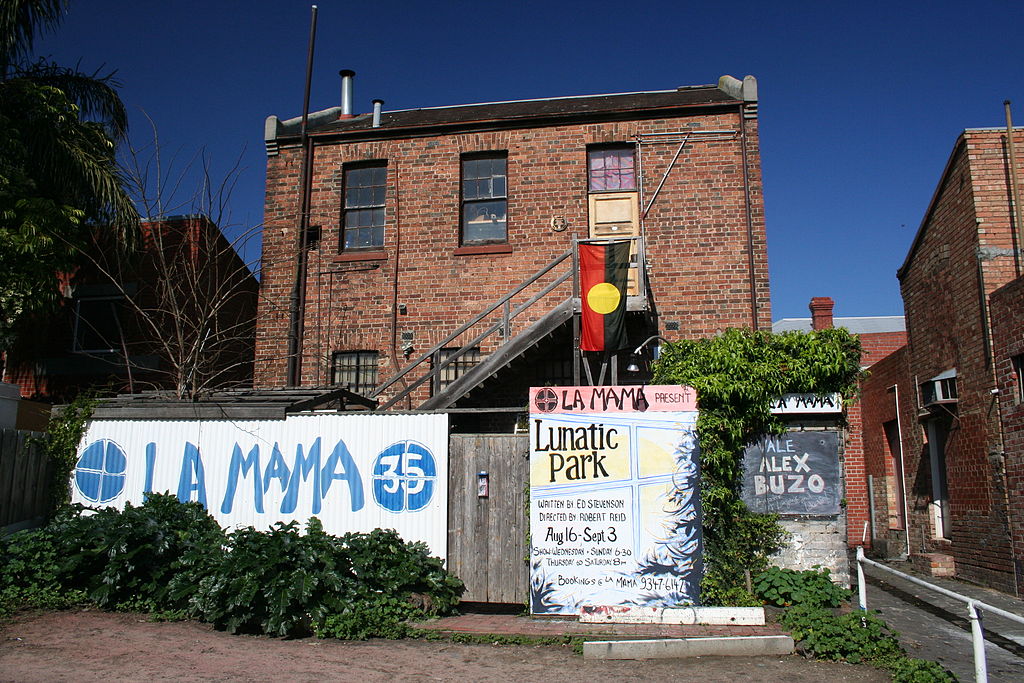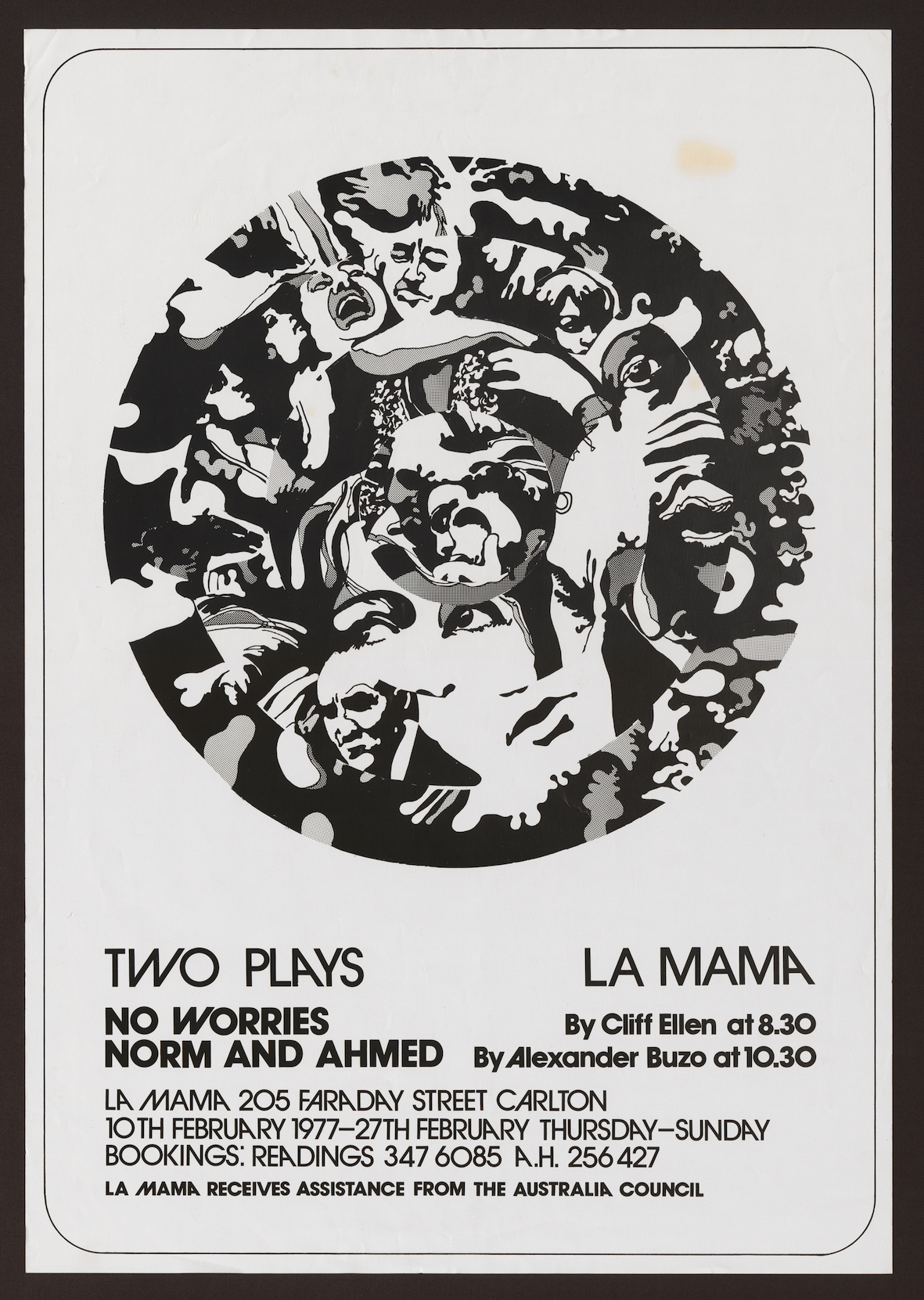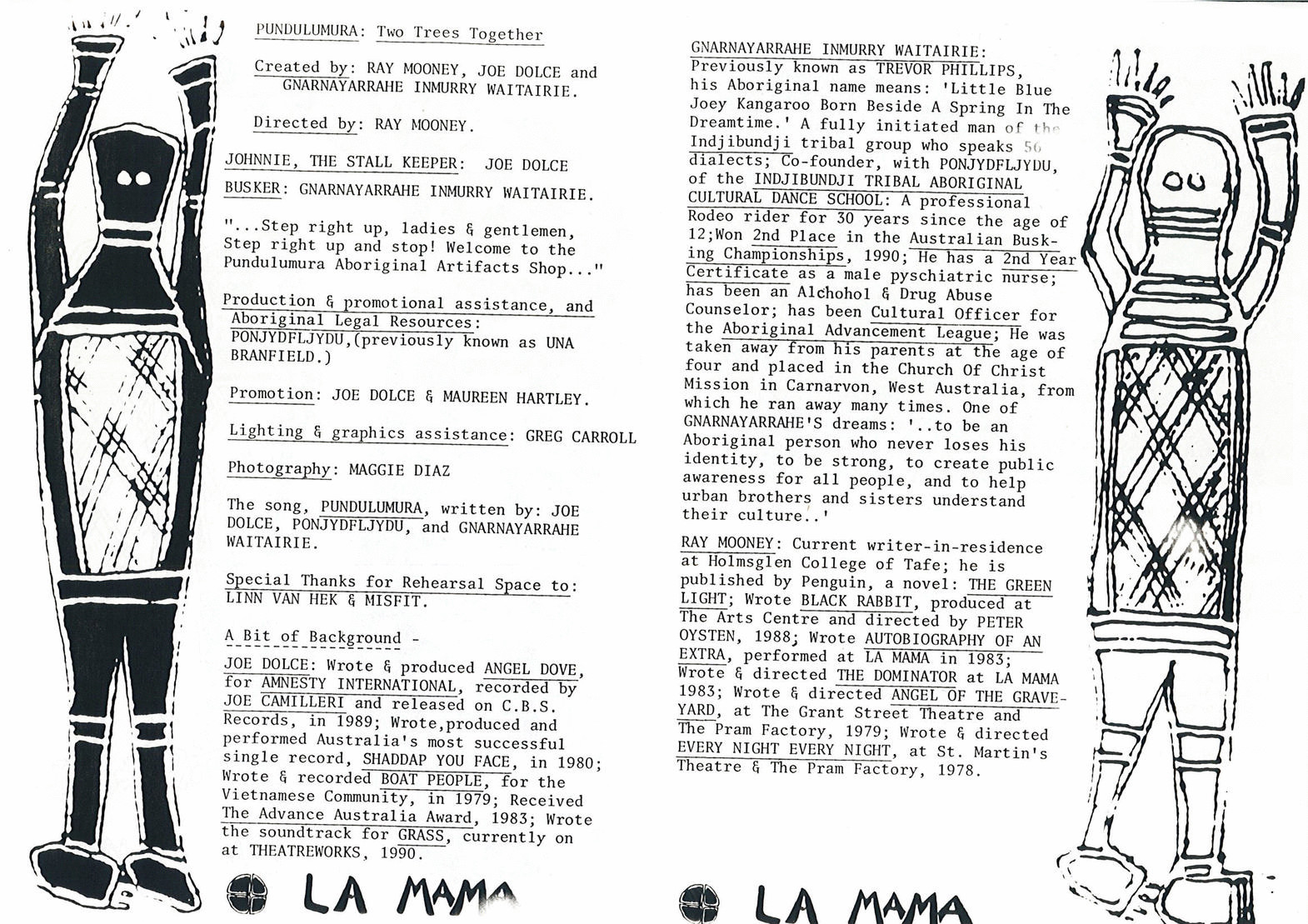Censorship and celebration at La Mama

Fifty years of La Mama theatre is documented in the University of Melbourne Archives, offering an insight into the emergence of Melbourne’s avant-garde theatre scene in the late 1960s
Published 4 August 2017
Inspired by New York’s La Mama Experimental Theatre Club, founder Betty Burstall was confident that Melbourne performers and audiences wanted and needed a place for progressive music, poetry and film too.
La Mama nurtured local talent and rode the international wave of social and cultural change in the late 1960s to provide a platform for alternative voices in the arts. In a company newsletter from October 1969 this vision was expanded: La Mama would be a theatre to make possible “a new audience-actor relationship. It was informal, direct, immediate. It was also a playwrights’ theatre…where you could hear what people now were thinking and feeling.”
Early archival material, such as correspondence and newsletters, reveals the co-operative nature that Burstall was committed to; her policy of developing solely Australian work was financially risky in an arts scene dominated by the mainstream canon of mainly American and English work.

Censorship and controversy
“Revolutionary things are happening in theatre today and I want them here.” Burstall’s ambitions for La Mama were grand, and the revolution began almost immediately, with plays pushing the legal boundaries of decency of the time.

The earliest offender was the 1968 production of Alex Buzo’s Norm and Ahmed. The final line of dialogue “fucking boongs” is delivered by Norm to Ahmed, a Pakistani student. Actor Lindsey Smith was arrested for using obscene language, and the play’s producer Graeme Blundell was charged with aiding and abetting Smith. In 1969, John Romeril’s Whatever Happened to Realism resulted in the arrest of nine actors for using obscene language in a public place.
Boxes of news-cuttings from this era tell the story of La Mama’s ongoing battle against censorship and the restrictions imposed by Australian social and cultural values of the time.
The archives also feature production posters, including lino-cuts crafted by Tim Burstall, Betty’s husband. The few styles repeated in different colours with handwritten production dates and times illustrate trends in grassroots art and design, as well as the collaborative nature of La Mama.
Other established artists such as photographer Peter Lyssiotis created production posters and art work – in Lyssiotis’ case posters and artwork for his playwright daughter Tes. A wild variety of style and quality is demonstrated in some of the earlier posters by anonymous artists whose work is marked with holes left by the staples used to distribute them on street corners.

Supporting other art forms
La Mama encompassed many more facets of the Melbourne avant-garde arts scene. Neo Kyma refers to a movement in Greek music that found popularity in the 1960s and 70s, extending well into the 1980s in Australian Greek communities. For around five years, Christos and Tasos Ioannidis played Greek and ployethnic music at La Mama.

“The 1970s and ‘80s were the golden era of Melbourne’s Greek community. Everything, including the arts, was blooming. Especially La Mama - it was not only for Greeks, it was a place of meeting, getting together, it became a culture” explains Christos. Burstall and Liz Jones, who followed her as artistic director in 1977, had created a space where artists from all backgrounds could practice, improvise and collaborate with their peers
Poetry and spoken word were also promoted from La Mama’s inception in 1967, led by Glen Tomesetti and Kris Hemmensley, and continues today as a regular in La Mama’s program. Each La Mama Poetica event featured multiple acts and showcased work from both emerging and established poets.
Mainstays included Jennifer Strauss, Wendy Poussard and Jennifer Harrison. University of Melbourne academic Kevin Brophy was a regular and a reading by Chris Wallace-Crabbe would have been rousing. Left field inclusions were the works of Indonesian poets performed by Geoff Fox, radical experimental poet and a founding member of Australia’s Poet’s Union. And there was Thalia, a night dedicated to the Perseverance Poets collective, featuring Louise Craig and Whitefeather Light.
Despite earlier confrontations with the law, La Mama continued supporting Australian writers, actors and directors, providing a place where collaboration and experimentation were centre-stage. Stalwarts of the Australian theatre scene like Jack Hibberd, David Williamson and Graeme Blundell were given the chance to practice and develop their craft, as were other performance artists, such as filmmakers Corinne and Arthur Cantrill.
In the decades following the ‘obscenity trials’, La Mama continued pushing audiences, exploring concepts of identity, and elevating voices of the silenced. Playwrights such as Mammad Aidani and Tes Lyssiotis used this platform to chronicle the variety of the migrant experience, whilst plays like Pundulumura: Two Trees Together (1990) by Aboriginal actor comedian Gnarnayarrahe Immurry Waitairie and prolific Melbourne writer and director Ray Mooney explored relationships between black and white Australian cultures.

From the first donation of records in 1977, the University of Melbourne Archive has seen its relationship with La Mama as a valuable one, not only for volunteer projects and exhibitions but in maintaining a comprehensive record of Melbourne’s theatre history. The La Mama Collection complements that of the Union Theatre Repertory Company which evolved into the Melbourne Theatre Company, as well as smaller collections of ephemera from the late 19th century to the 1960s.
The La Mama collection is open access to all researchers and its finding aids can be located on the UMA online catalogue by using the search term “La Mama”. A selection of records and production posters from the La Mama archive are on display in the Arts West building at the University of Melbourne.
Banner Image: Wikimedia